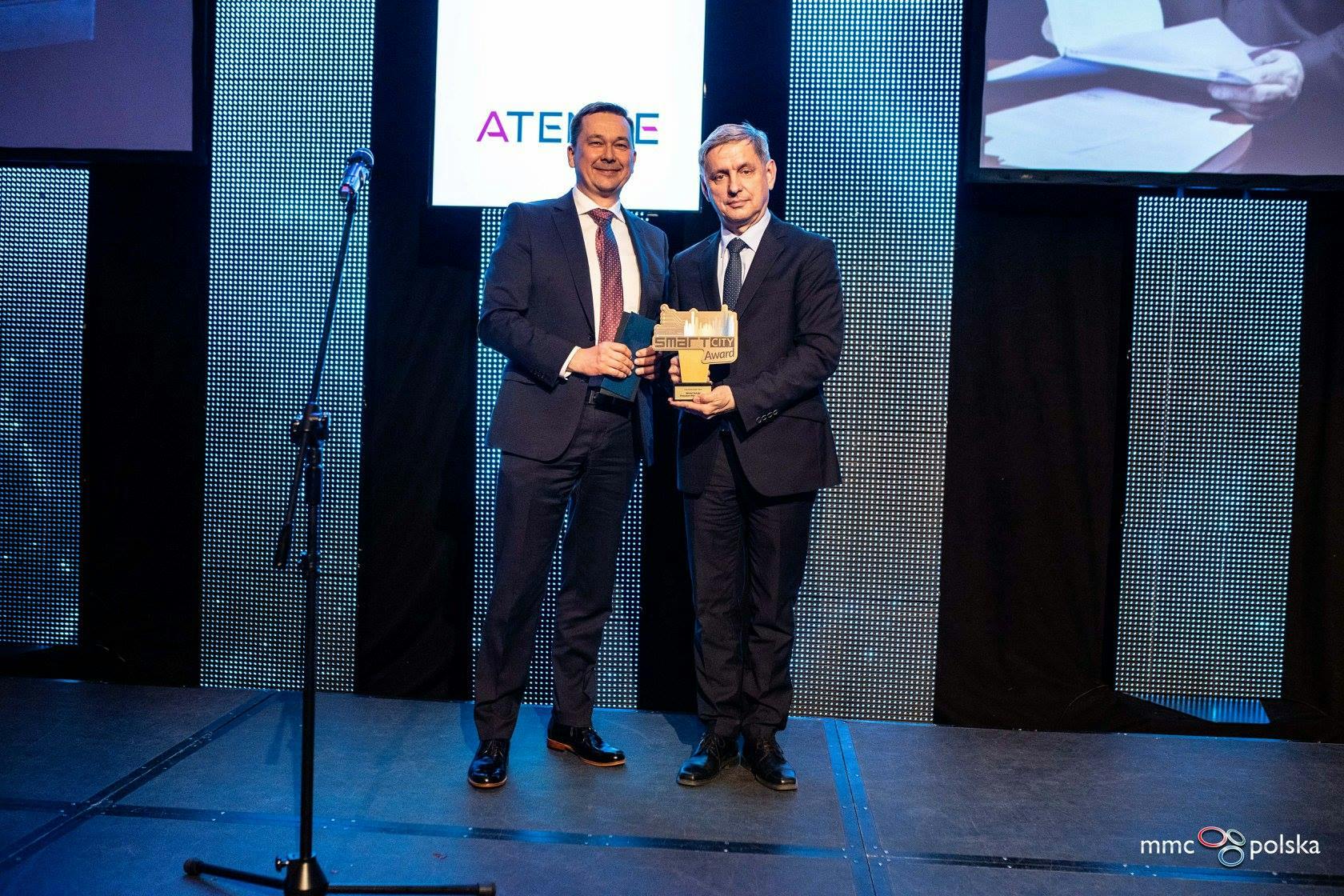Michał Zalewski, Mayor of Toruń, honoured with the title of Man of the Year 2018 during the Smart City Forum for urban innovations implemented in Toruń based on technologies of the future. The Toruń Shared Services Center (TCUW), in order to increase operational efficiency and optimize the costs of servicing units subordinate to the City of Toruń, has implemented a durable medium based on blockchain technology. (picture by MMC Polska).
Client:
TCUW
Technology:
Atende ChainDoc

Blockchain is a “chain of blocks of data”, a manner of recording information in a database (e.g. transaction data), in the form of subsequent blocks. Each block contains a reference to the previous block, making the chain unbreakable.
It is impossible to make any changes to historical data due to the fact that the same copies of the whole chain are stored on different servers distributed around the network. The database is shared via a public or private computer network. Transactions in the blockchain are irreversible and fully secured. The history of records in the database based on the blockchain technology can be reviewed and verified, which means that audits can be conducted and inspires greater trust. At the same time each computer node within the network stores a copy of the database, so there is no single failure point.
network and what are the benefits?
Private blockchain allows the selection of partners and participants forming the blockchain network, thanks to which industry networks are built. The private blockchain ensures security and confidentiality of information, and the data writing itself is fast and does not require as large resources (related to e.g. power consumption) as public networks.

Each piece of information in the blockchain network is mathematically encrypted as a “hash” before it is added to the chain of historical records as a new block. Hash is a short string of characters assigned to any large data set using the so-called hash function. Hashes allow to use a relatively short string that corresponds to a specific transaction saved in the blockchain and verifiable at any time.

Don't hesitate to contact our consultant.


